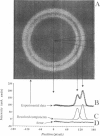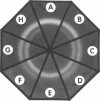Abstract
The kinetics of the thermotropic lamellar gel (L beta')/lamellar liquid crystal (L alpha) and L alpha/inverted hexagonal (HII) phase transitions in fully hydrated dihexadecylphosphatidylethanolamine (DHPE) have been studied. Measurements were made by using time-resolved x-ray diffraction (TRXRD) to monitor progress of the transitions. In these studies microwave energy at 2.5 GHz was used to increase the sample temperature rapidly and uniformly through the phase transition regions. The L beta'/L alpha and L alpha/HII transitions of DHPE were examined under active microwave heating and passive cooling. The transitions were found to be repeatable and reversible, and to have an upper bound on the time required to complete the transition of less than 3 s. Regardless of the direction of the transition, both phase transitions appeared to be two-state with no accumulation of intermediates to within the sensitivity limits of the TRXRD method. The rate and amplitude of the temperature jump can be controlled by regulating microwave radiation input power. A temperature jump rate of 29 degrees C/s was obtained at a final microwave power setting of 120 W. Comparisons between previously reported fluid flow (Caffrey, M. 1985. Biochemistry. 24:4826-4844) and microwave heating studies suggest that the determination of limiting transit times will require faster heating.
Full text
PDF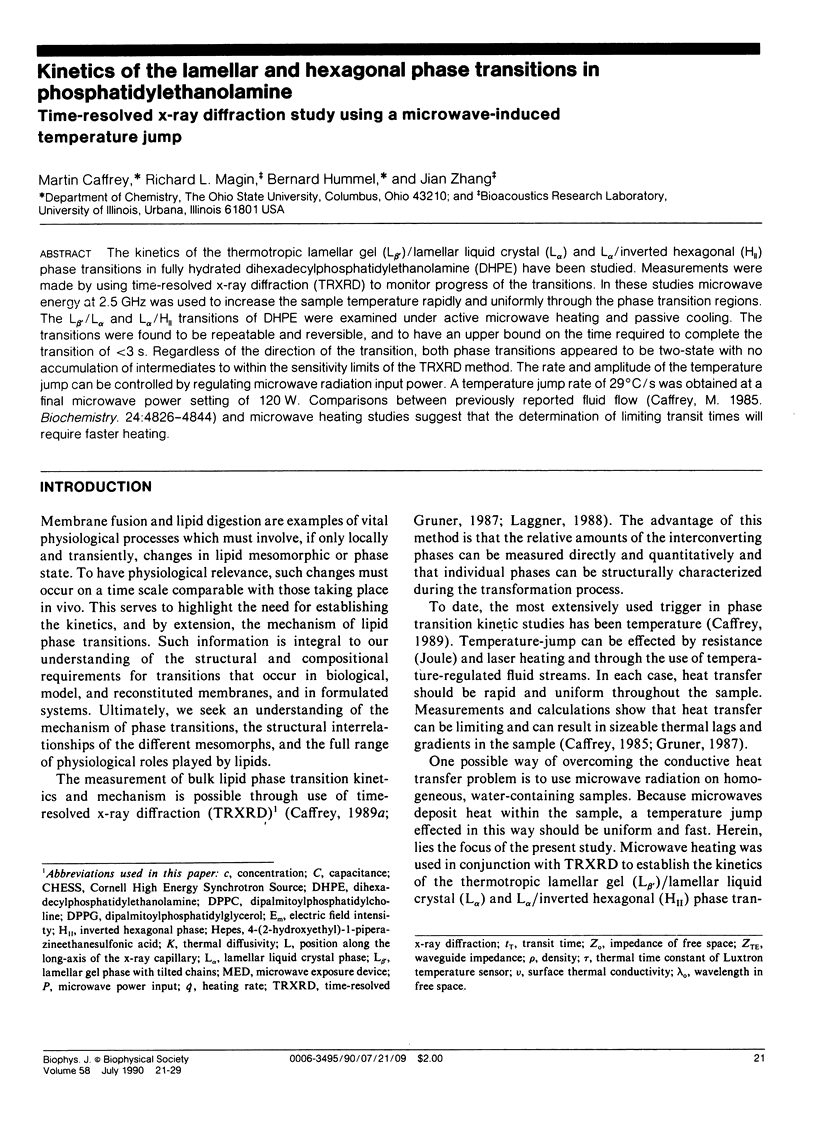
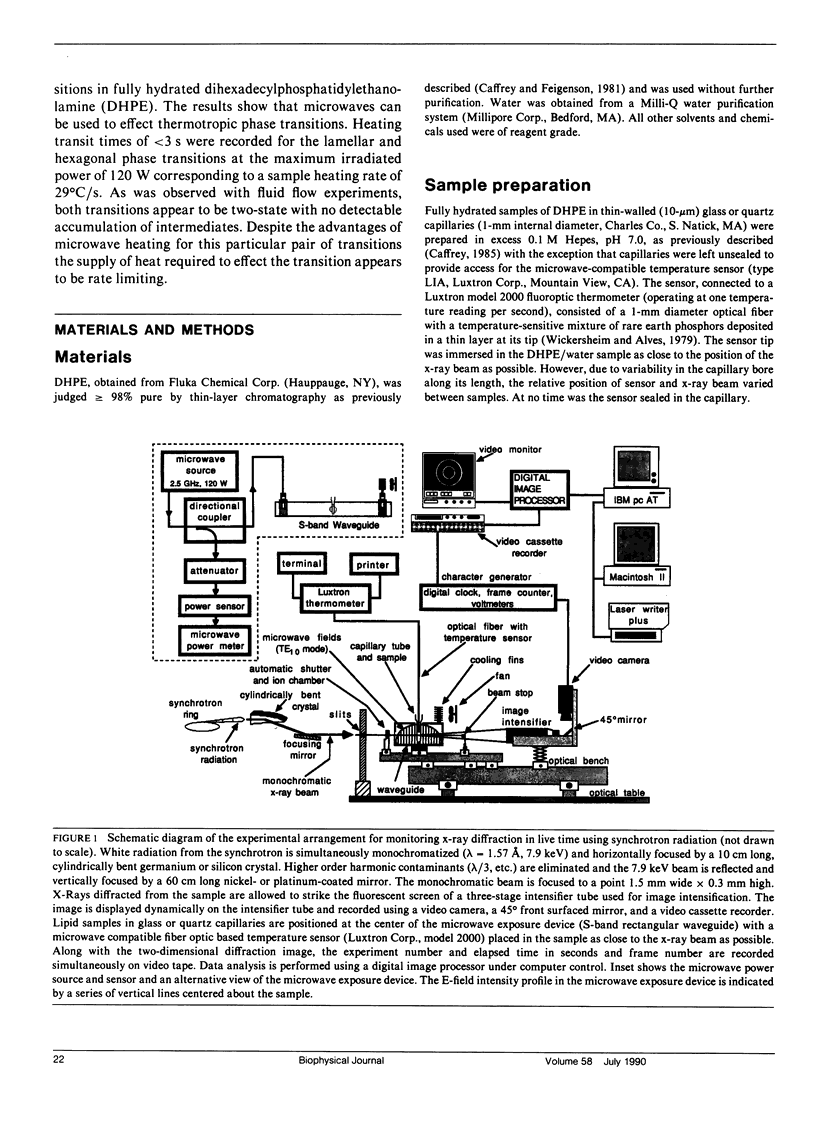
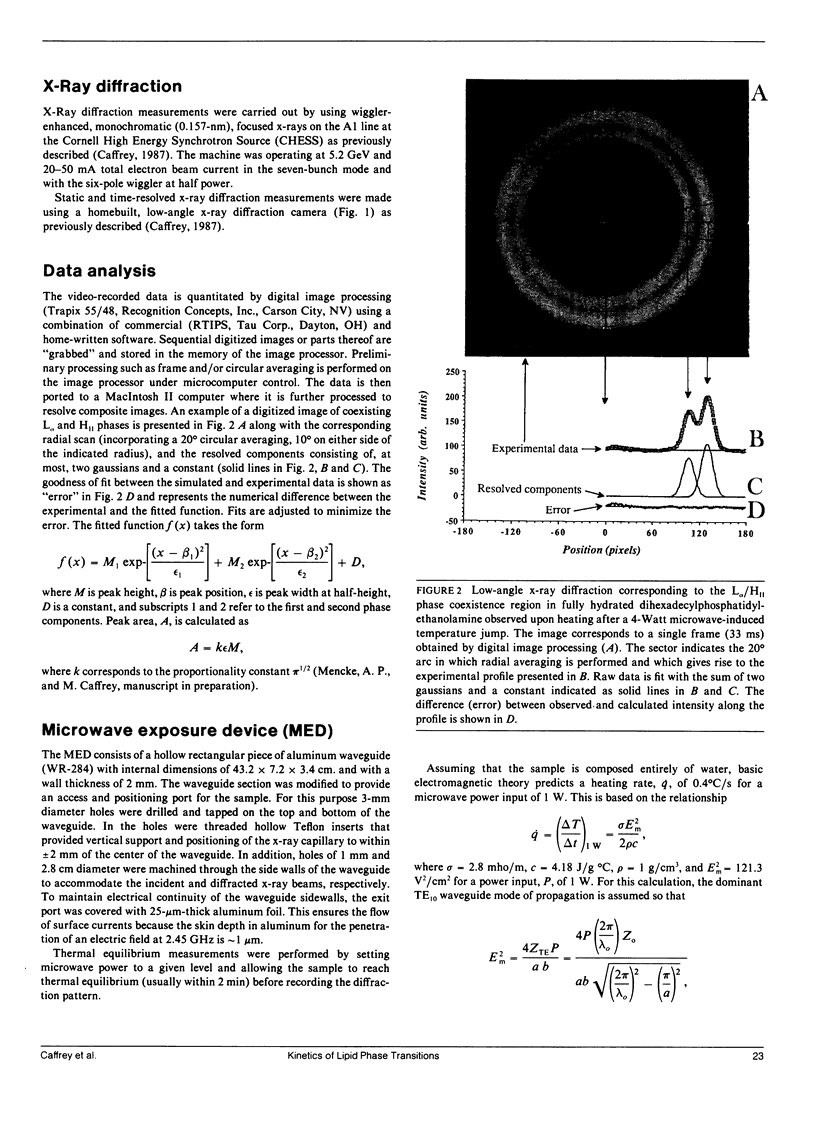
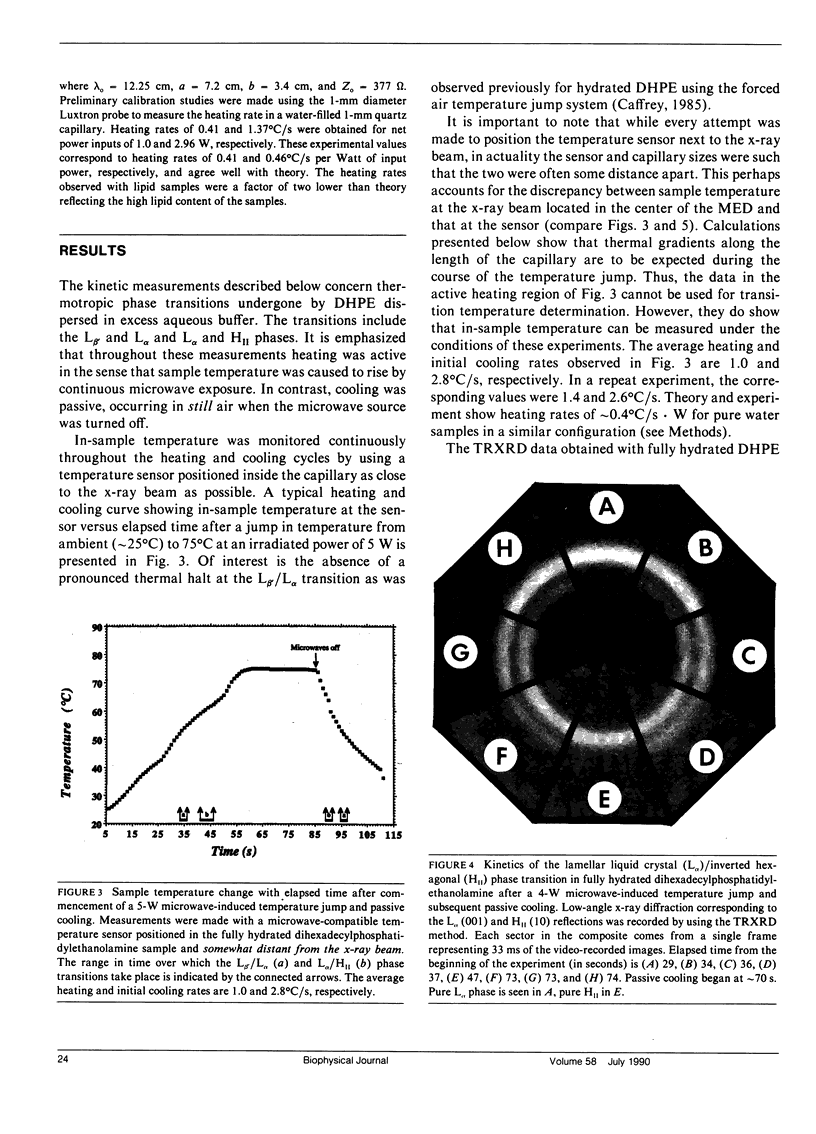
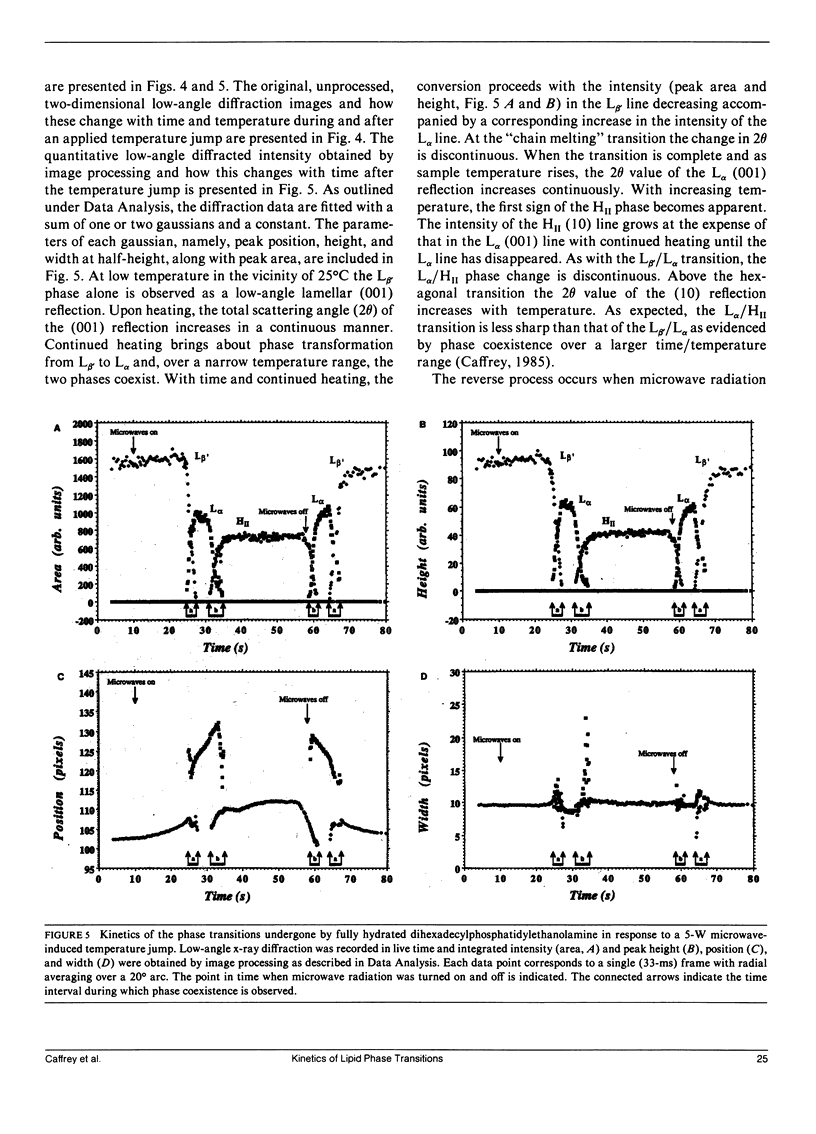
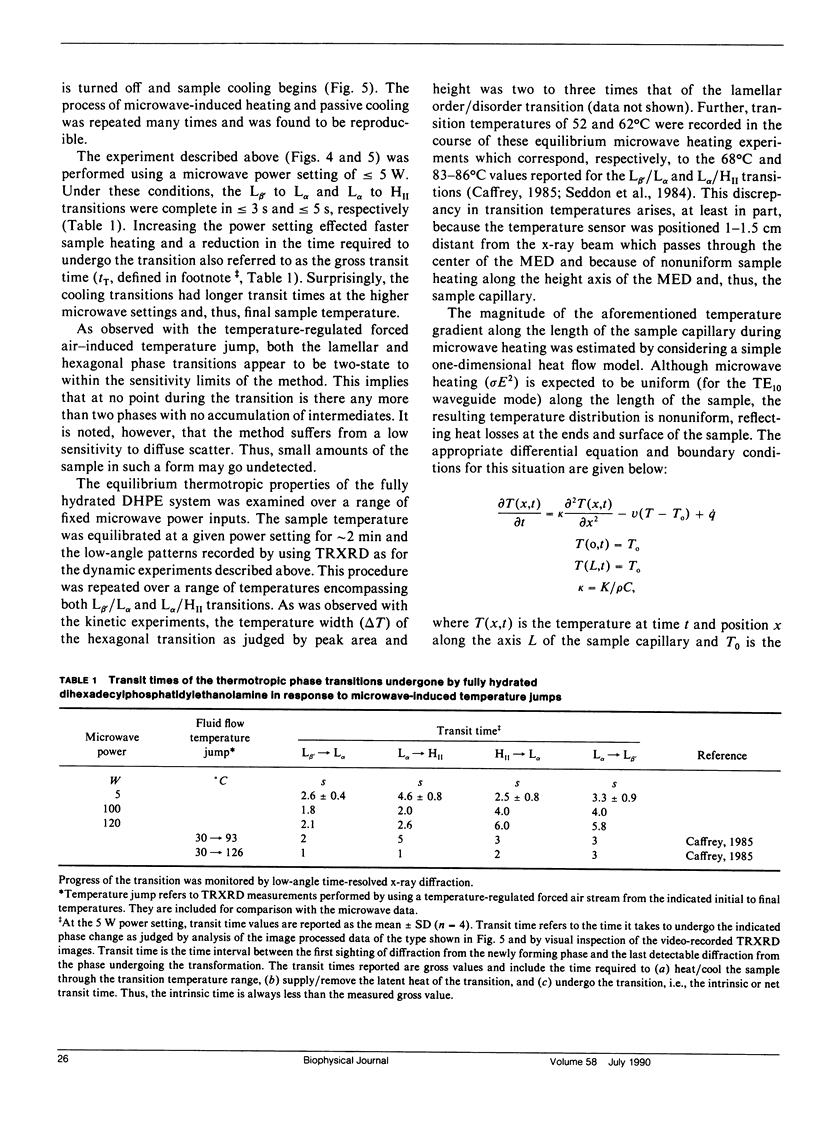
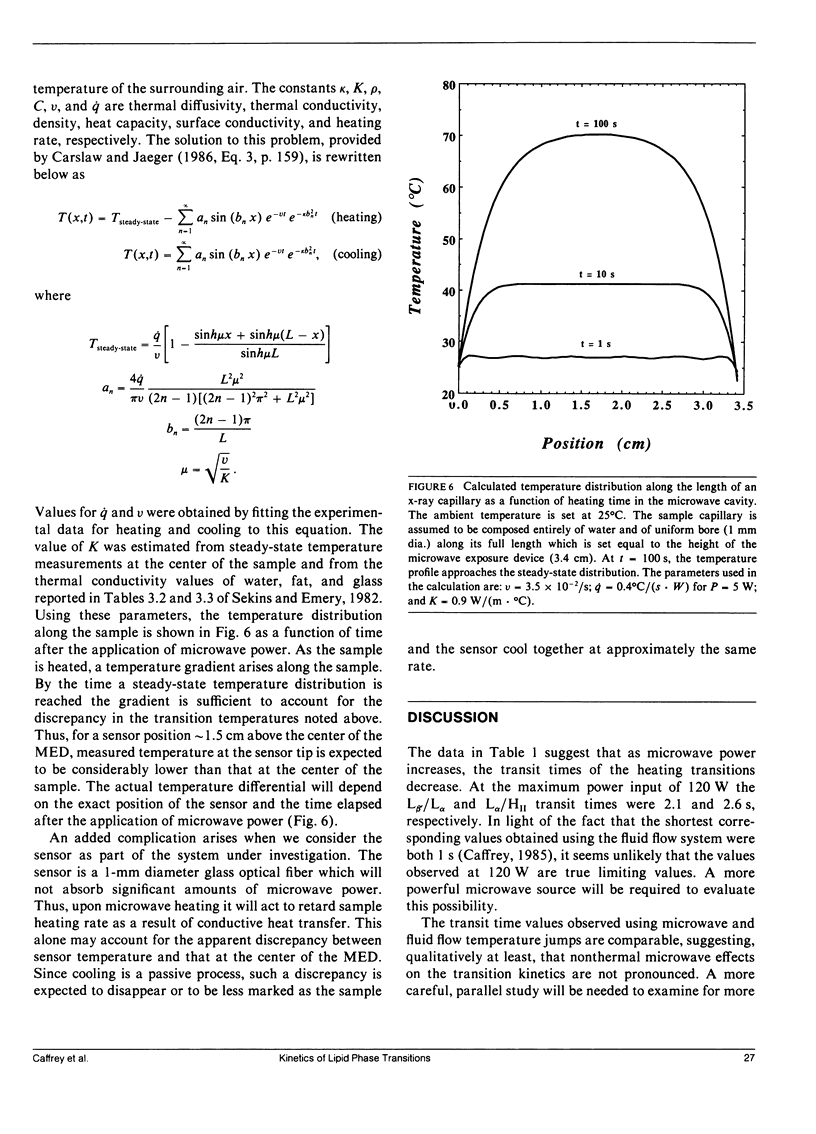
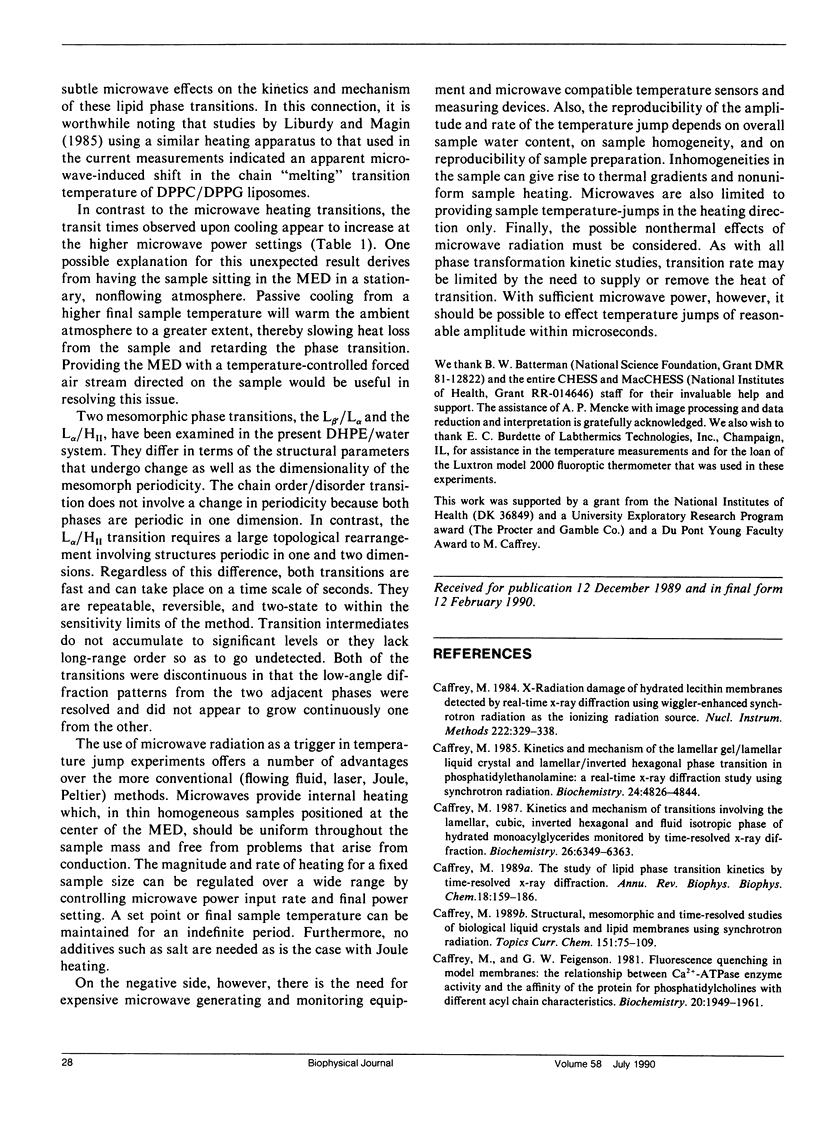
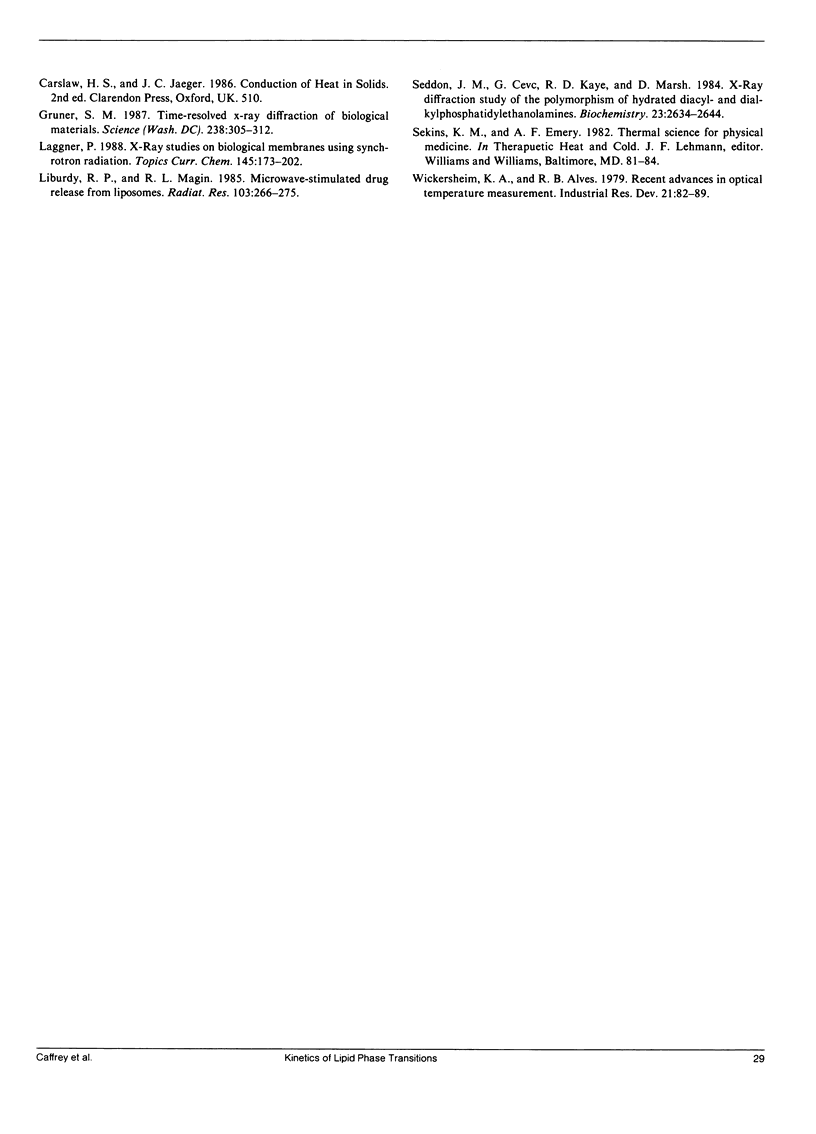
Images in this article
Selected References
These references are in PubMed. This may not be the complete list of references from this article.
- Caffrey M., Feigenson G. W. Fluorescence quenching in model membranes. 3. Relationship between calcium adenosinetriphosphatase enzyme activity and the affinity of the protein for phosphatidylcholines with different acyl chain characteristics. Biochemistry. 1981 Mar 31;20(7):1949–1961. doi: 10.1021/bi00510a034. [DOI] [PubMed] [Google Scholar]
- Caffrey M. Kinetics and mechanism of the lamellar gel/lamellar liquid-crystal and lamellar/inverted hexagonal phase transition in phosphatidylethanolamine: a real-time X-ray diffraction study using synchrotron radiation. Biochemistry. 1985 Aug 27;24(18):4826–4844. doi: 10.1021/bi00339a017. [DOI] [PubMed] [Google Scholar]
- Caffrey M. Kinetics and mechanism of transitions involving the lamellar, cubic, inverted hexagonal, and fluid isotropic phases of hydrated monoacylglycerides monitored by time-resolved X-ray diffraction. Biochemistry. 1987 Oct 6;26(20):6349–6363. doi: 10.1021/bi00394a008. [DOI] [PubMed] [Google Scholar]
- Caffrey M. The study of lipid phase transition kinetics by time-resolved X-ray diffraction. Annu Rev Biophys Biophys Chem. 1989;18:159–186. doi: 10.1146/annurev.bb.18.060189.001111. [DOI] [PubMed] [Google Scholar]
- Gruner S. M. Time-resolved x-ray diffraction of biological materials. Science. 1987 Oct 16;238(4825):305–312. doi: 10.1126/science.3310232. [DOI] [PubMed] [Google Scholar]
- Liburdy R. P., Magin R. L. Microwave-stimulated drug release from liposomes. Radiat Res. 1985 Aug;103(2):266–275. [PubMed] [Google Scholar]
- Seddon J. M., Cevc G., Kaye R. D., Marsh D. X-ray diffraction study of the polymorphism of hydrated diacyl- and dialkylphosphatidylethanolamines. Biochemistry. 1984 Jun 5;23(12):2634–2644. doi: 10.1021/bi00307a015. [DOI] [PubMed] [Google Scholar]



